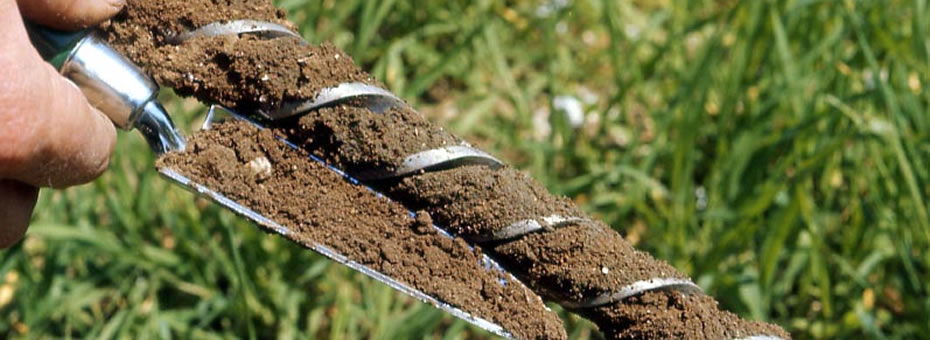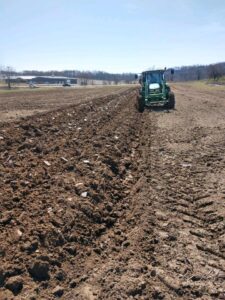The Unforeseen Benefit of Acid Rain
I take for granted sometimes how interesting my life is. I, Trevor, am fortunate to get to do this work and have people, like you, who vote with your dollar to support local agriculture and our sustainable food system.
These past few weeks I've been doing a lot with soils. Soils are the base of everything a farmer does. The quality of our forage for the beef, or the health of our vegetables for you, depends on the soils. And the soils must be in balance.
What we do as organic farmers is try to work with nature so that the plant doesn't struggle. We can fertilizer a crop, or we can fertilizer the farm. I'll explain more below.

Feeding the crop vs the soil
It is sometimes a challenge for a farmer to think about what he is feeding. The plant needs certain nutrients to grow and there are certain ones it will respond to immediately. If a plant starts to yellow from the top down, we usually know it's a nitrogen deficiency. If it is yellow throughout, it can be sulfur. If it starts to get purple tips, its usually a phosphorus issue.
So in the case of produce (most often), it is easy to correct issues by adding nutrients through foliar sprays (to the leaves) or through drip irrigation (to the roots). In this case, however, you are feeding the plant.
In feeding the plant, it doesn't have to put out deep roots to draw up water or nutrients. It's hard to control the instant urge to feed the plant this way. With the soils in the right balance and the "biology" of the soil in line, a plant will dig down to get what it needs. A strong root structure is not only healthier for the plant, but in the long run it helps improve the organic matter of the soil as the roots decompose over the winter.
Taking inventory of the soil
Each spring we take soil samples of both pasture lands and produce fields. It's fun to look at the results over the years to see what is changing and if we are making improvements.
In general, our fertilizer program includes several components:
- Animal manures and compost. These are full of living organisms and "organic matter" that help improve soil structure (drainage as well as water holding capacity) and the "biology" of the soil (enzymes and bacteria that work in harmony with the plants' roots for nutrient uptake)
- Dry amendments like potash (potassium) and gypsum (calcium) to condition the soil and add slow-release minerals
- Enzymatic crop digesters and fertilizers that help add good biology to the soils
- Foliar and drip irrigation to adjust and address problems. There is a lot of science to farming and it really makes me wish I studied biology or chemistry instead of political science!

Our Soils are low in Sulfur
In general, most farmers across the US are low in sulfur. Sulfur in an important compound that helps stimulate the enzymes that work with the plants to access other nutrients like the big 3 - nitrogen, potassium, and phosphorus.
This issue is a "newer" issue. 50 years ago when acid rain was prevalent, areas of the country got up to 45 lbs per acre of sulfur through acid rain. Acid rain isn't much of an issue anymore and now our soils are low in sulfur.
Tweaking the Soils
This week, we just finished "tweaking" our soils a bit - a dry mixture inoculated with good enzymes, full of carbon in the form of humates, and beefed up with the minerals we are low in - sulfur and potassium in particular. We spread it quickly with a cone spreader and got it on Tuesday just before we got hard rains overnight to help drive it down into the soil.
These annual adjustments, in addition to the manure and compost collected around the farm, are the basis of a healthy soil system that feeds our livestock and our vegetables.
